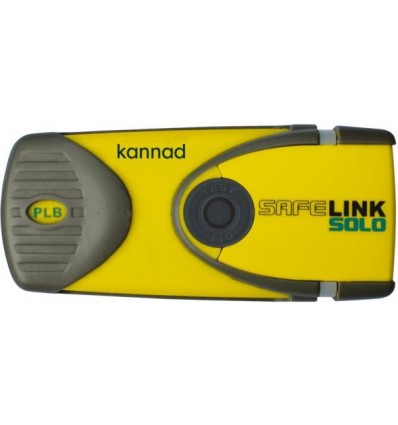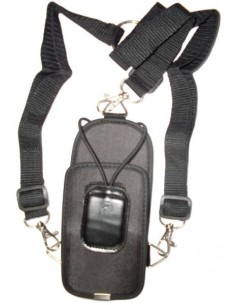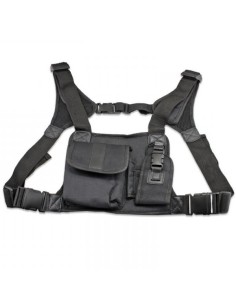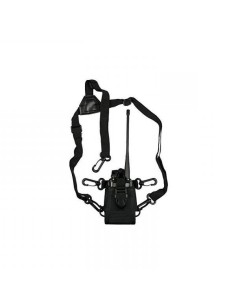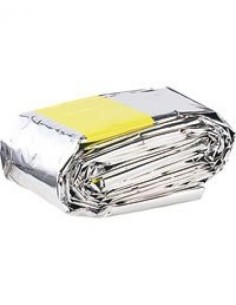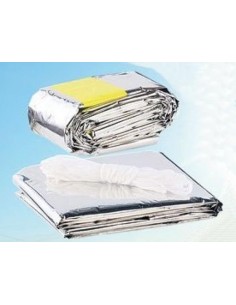Safety - Life jackets- Distress and Survival
Personal Locator Beacon PLB with GPS KANNAD Link Solo
The Kannad Safelink Solo PLB Distress Beacon easily slips into a jacket pocket, around the neck or attaches to the lifejacket. Compact and light, it offers a perfect grip. Once activated, it transmits 2 distress signals simultaneously 406 and 121.5, it gives the GPS location automatically. This is the new model, delivered with the GALILEO Reception as well as an Isoprene Cover Pouch for the more buoyant ride and a transport pouch. NOT AVAILABLE FOR THE MOMENT
Distress beacon PLB SAFELINK KANNAD SOLO WITH GPS anD GALILEO - Beacon Personal
BEACON CURRENTLY UNAVAILABLE DUE TO KANNAD'S INABILITY TO DELIVER FRANCE
TO ALLOW YOU TO HAVE A BEACON WITH THE LONGEST POSSIBLE BATTERY VALIDITY WE ORDER THESE BEAMS AS AND WHILE. .
THE BEACONS CAN BE ORDERED ON THE WEBSITE, BUT THEREFORE YOU WILL HAVE 10 TO 20 DAYS OF WAITING TIME FOLLOWING THE PERIOD OF THE YEAR WE RECEIVE YOUR ORDER.
THEREFORE ANTICIPATE YOUR PURCHASE DURING A DEPARTURE TOWARDS A FAR DESTINATION OR A MARITIME CROSSING.
NOTE THAT A PORTABLE BEACON IS NOT READY UNLESS YOU ALREADY CHANGE THE CONTACTS IDENTIFIED IN THE RECORD. IT CANNOT BE LENT.
THIS BEACON IS AGAIN NOT AVAILABLE
THIS BEACON HAS A FRENCH REGISTRATION CODE AND CAN ONLY BE REGISTERED WITH COPSAT SARSAT IN FRANCE
DESCRIPTION
Kannad's personal Safelink Solo beacon, this ELT (Emergency Locator Transmitter) is the smallest and most compact of the positioning beacons on the market (without MMSI registration) 111 x 50 x 35 mm and its lightness 165 g is actually the most popular PLB currently. With its built-in GPS 50 channels, in case of triggering the beacon will transmit from anywhere in the world your refreshed position every 20 minutes on the frequency of rescue (band 406MHZ). The PLB Safelink Solo GPS Safety Beacon will guide triggered searches by transmitting signals in the 121 MHz band (121.5 Mhz distress frequency)
Finally, you can trigger in addition the emission of bright SOS signals to guide the rescuers to you.
The Safelink Solo PLB fits easily in the pocket of a quarter jacket or lifejacket and offers a perfect grip. It is suitable for both aeronautical and marine use.
Once activated, it will transmit 2 distress signals simultaneously :
- One to the international Cospas Sarsat satellite search and rescue system on the 406 MHz frequency, allowing the location and identification of the carrier around the world 24/24 thanks to the unique identifier of the beacon. 50 channels complete the 406 MHz link by transmitting the GPS position of the person in distress for an even more precise and fast location. The GPS receiver allows an almost immediate alert (3 minutes) and a very high position accuracy (about 50 m) which is re-updated every 20 minutes to integrate the drift.
- The other on the 121.5 MHz radio-guiding frequency, making it possible to refine the exact position by homing (also called triangulation or cross-search) and to speed up the recovery process in the final phase of the research operations on the place of distress
Comes with a floating cover, universal protective pouch in soft nylon and strap.
PLB Beacons have serialized programming by default.
At the time of purchase, you will need to register your beacon with the relevant authorities of the country corresponding to the serialized coding.
NOTE: It is preferable, to easily record your Beacon to buy it in France if you are a French resident.
Products purchased abroad must be unrestricted to accept a French registration ... You have to know it previously.
Also compare what is comparable, this beacon provided your GPS position when issued, which is not the case for all products on the market, this is the full option product, there toot be careful of the advertising.
CaractEristiCS
- Ultra compact (111 x 50 x 35 mm) and lightweight (165 g only)
- Waterproof to immersion up to 10 meters
- Safelink Solo with serialized coding France
- Floating when used with its special cover, delivered as standard
- No subscription or communication fees
- Cospas-Sarsat classification T.001 / T.007 class 2
- Satellite transmission frequency: 406.037 MHz to 5 mW
- Radio guide frequency: 121.5 MHz to 50 mW
- Interchangeable lithium battery with a life of 6 years
- Transmission of the alert for a minimum of 24 hours
- Secure manual activation in 3 steps
- International approvals
RADIO LICENSE
Users in France are not required to hold a radio license for a PLB. Other countries may require the PLB user to be licensed. For advice check with your national communications licensing authority.
USER MANUAL
- 1. Raise the red lever and remove the antenna cover.
Important: The antenna cover is a tamper-proof seal that, once broken, can not be put back in place.
- 2. Grasp the end of the antenna. Unfold the antenna until it is upright.
CAUTION: The antenna deploys with a spring; Do not point the individual locator tag at your face when you extend the antenna.
- 3. Press the ON button.
The transmission of the first distress message begins 50 seconds after the initial activation of the beacon. If the beacon has been activated falsely or accidentally, this delay allows the user to stop the SAFELINK SOLO before the warning signal is transmitted.
ATTENTION
BEACON MUST BE REGISTERED WITH SARSAT TO BE OPERATIONAL
(You must be living in France to register this PLB by this channel)
Register your PLB SAFALINK SOLO from KANNAD
How it works with the SARSAT system:
The tag as soon as it is activated transmits on 2 frequencies and this simultaneously:
A first emergency signal to the SARSAT satellite system that covers (normally) the entire terrestrial surface on the 406 MHz band
Another local homing signal in 121.5MHz (our old beacons - so it's not silly to always listen to the 121.5 in the check-list) and this to allow goniometric radio detection which normally speeds up the process. field research as the show approaches.
Once activated, the signals are transmitted with a power of 5 watts for at least 24 hours. The 406 MHz transmission was chosen to allow transmission to satellites without supposed shadows whatever the conditions. The fact that the beacon is GPS allows the transmission of the GPS position.
The SARSAT watchdogs then transmit the alert to the rescue zones quickly after having previously checked the information entered during the registration (contacts, telephones, destination, carrier, if entered before the departure, coherence ...).
(Do not forget to indicate your route and destination to the people who need to be contacted and you have indicated when registering the beacon, it is crucial.)
Small points of importance:
- In our case, it is a portable beacon, think it must be able to trigger it in an accident and find it quickly (in a shock objects "fly") use the leach.
- If your plane has a fixed beacon, check regularly that contact details are still valid, (phone number, death, divorce etc .. disturb the quality of information in time ...)
- All beacons allow only a certain number of functional checks before battery change and / or inspection by an authorized workshop. Even if the warranty is several years on the product. So do not check too often your beacon.
And who told you all that:
- Aerodiscount of course - Discount on the price but not on the quality of the information -
We are pilots before being a trader ... especially as regards safety, your security.
The device also includes SOS LED flashlight, of the type of lifejackets, manually activated, consisting of Electro Luminescent Diodes of good power, it transmits pre-recorded SOS signals (TI IT TI - TA TA TA - IT TI TI for the old ones), it favored the speed of detection of night (also the number of uses is limited to 30 per battery). You think that this function is only valid on the seaflight and that is why it is mandatory on life vests manual opening, but in an accident on land at dusk, by chance, this feature can also save your life.
After these comments why have a portable personal tag?
It can be used on many occasions, family or more sportive ride, car, boat, ski ... stay abroad.
It allows to move to seek help or to shelter away from the wreck or away from danger, while remaining identifiable. At sea, for example, following a landing, if the crew members have not regrouped and joined quickly, it becomes difficult to be identified individually, do not talk about the night.
It also serves as a safety feature when the aircraft does not have a beacon or the shock is light, or misaligned for the sensor, and did not trigger it automatically. (and yes!)
Whether you are a Pilot or a Driver, Passenger or a Simple Hiker
EQUIP YOURSELF
New
You might also like

